By: Esat Erkec | Comments (4) | Related: > Power BI Charts
Problem
Power BI has wide usage in the business intelligence market and offers a powerful solution for business intelligence projects. On the other hand, business or user requirements still continuing to change in business intelligence projects. Assume that you need to visualize the main theme of customer feedback text or the most read news. For this type of analysis, a word cloud is an appropriate solution. How do we use word cloud analysis in Power BI?
Solution
A Word Cloud will visualize the frequency of word for the given text. The word which has the highest frequency is shown larger than others. For this reason, when we want to analyze text or a word string, we can use Word Cloud analysis. The Power BI marketplace provides a word cloud visual and this visual adds the word cloud analysis capability to Power BI. In the Power BI marketplace, we can find these visuals for free and can add them into Power BI.
Now we will demonstrate how to use the word cloud visualization in Power BI.
Word Cloud in Power BI
In the first step of this demonstration we need to connect to the Power BI marketplace and download the word cloud visual. We will open the Power BI Desktop and click import a custom visual.
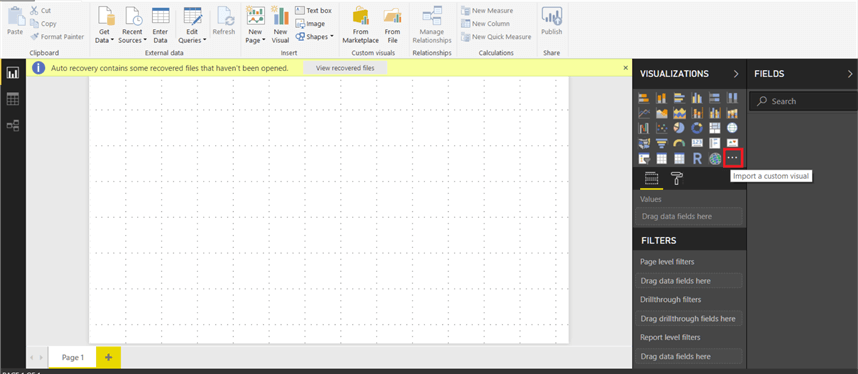
In order to complete this step; click import from marketplace and then connect to the marketplace.
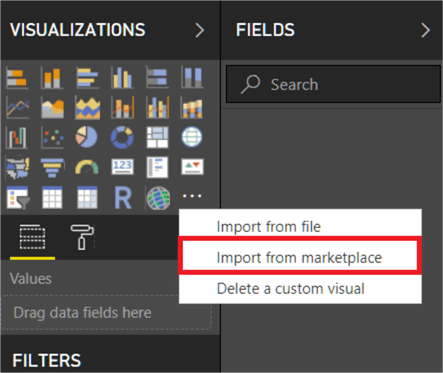
When you click Import from marketplace then Power BI asks for account information.
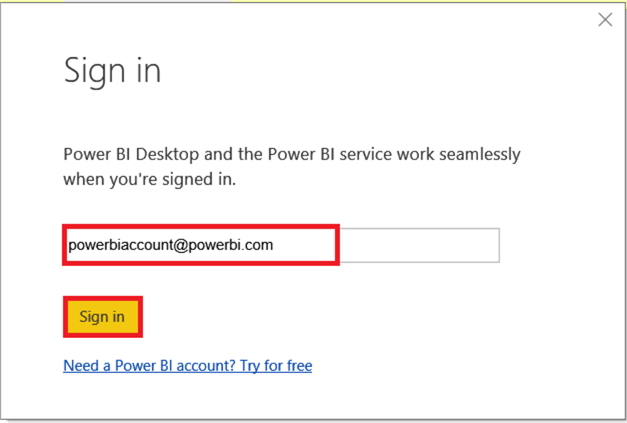
When we complete these steps, we will connect to the Power BI Visuals marketplace.
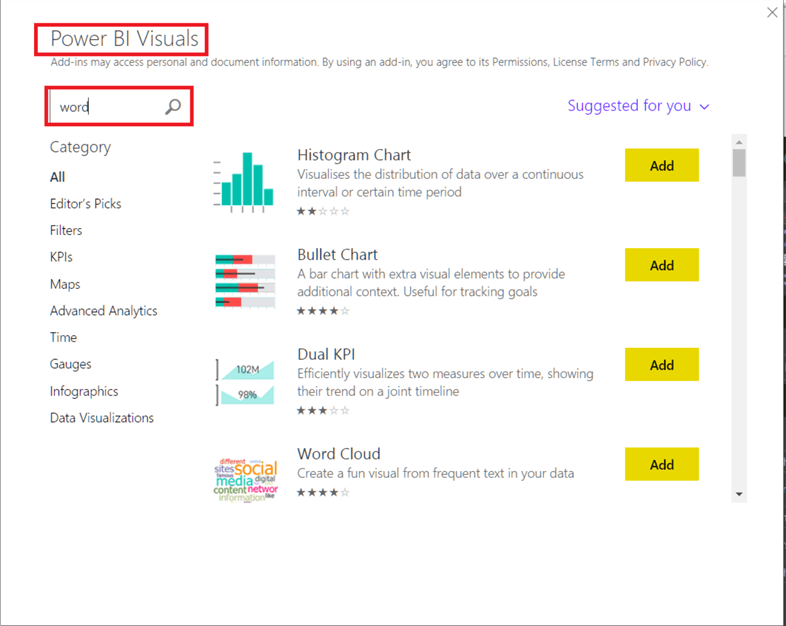
In the Power BI Visuals marketplace, you can find various visual charts and components. Now we will find the word cloud component and will add it to Power BI.
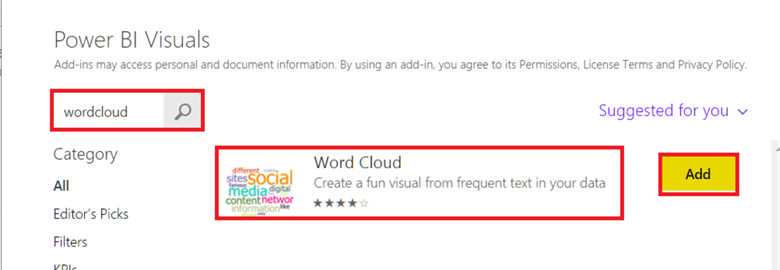
Now the word cloud component is ready for use. We can see this component on the right side of the Power BI visualizations tab.
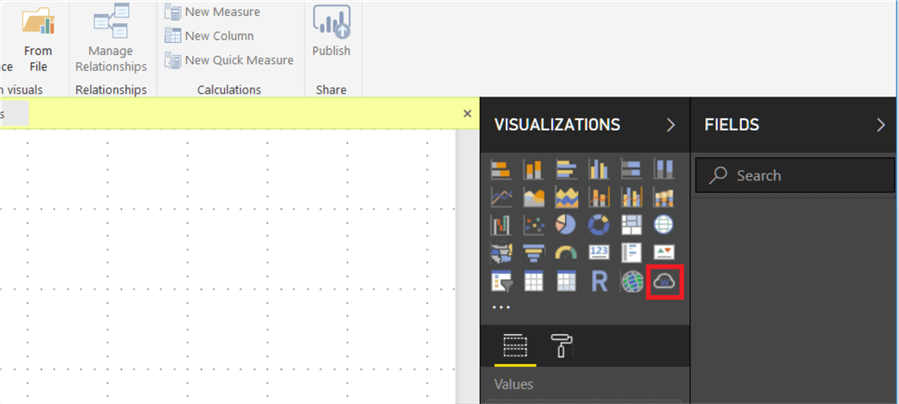
In this step we will add a data source to analyze the word cloud visual. In this demonstration we will use a text data source. But you can use another data sources (i.e. SQL Server, Excel, SAP HANA, etc.) which are accessible by Power BI. We will select Get Data and then click Text/CSV in the main design surface of Power BI.
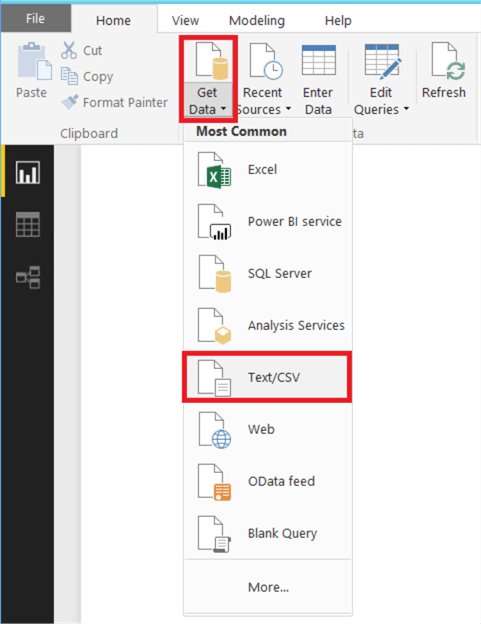
We will select a Notepad document as the data source.
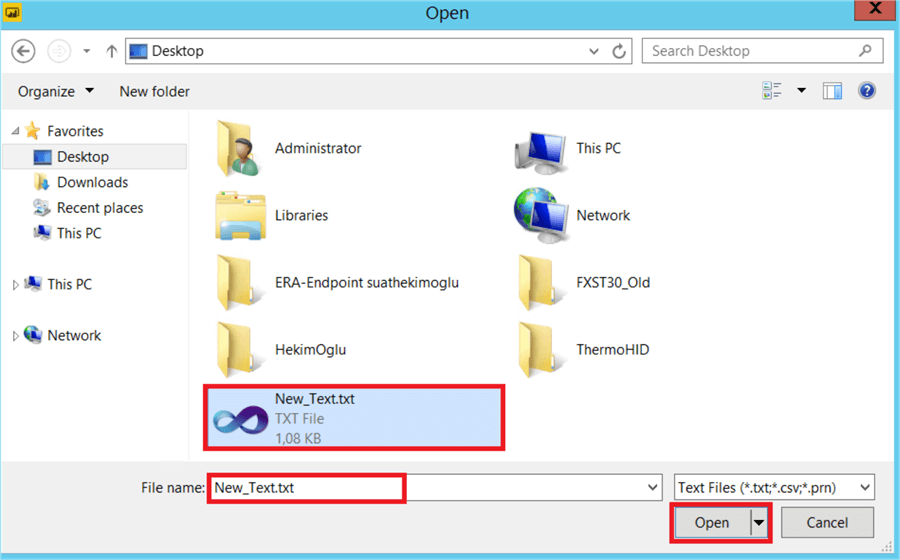
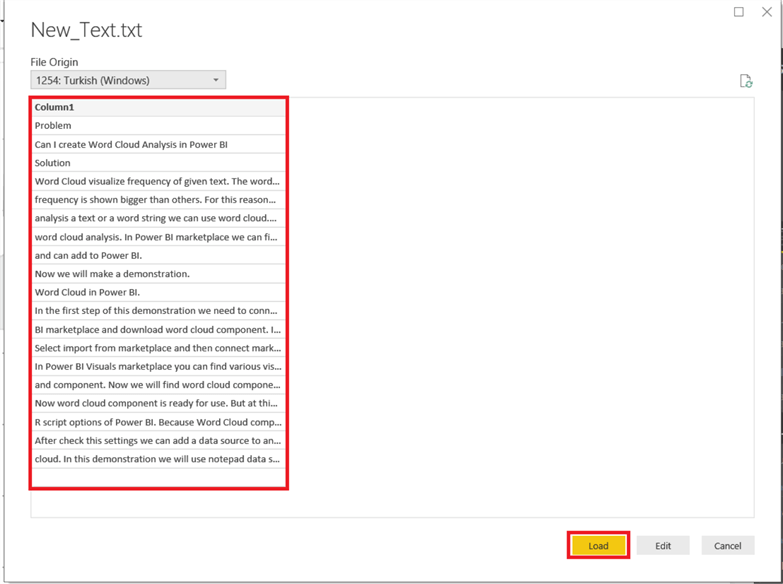
Now our data source is ready to use. In this step we will drag and drop the data source fields to the word cloud component.
Drag and drop Column1 to the Category field.
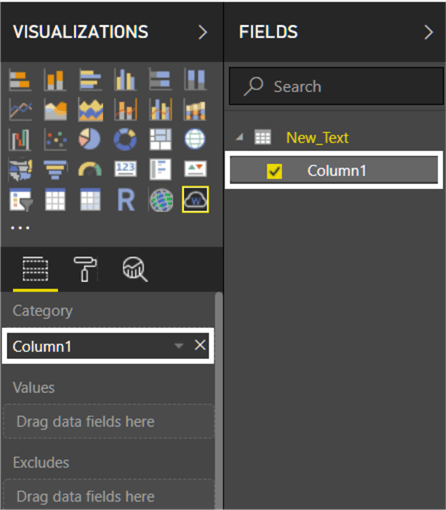
Our Word Cloud component will appear on the Power BI design surface and will look like this.
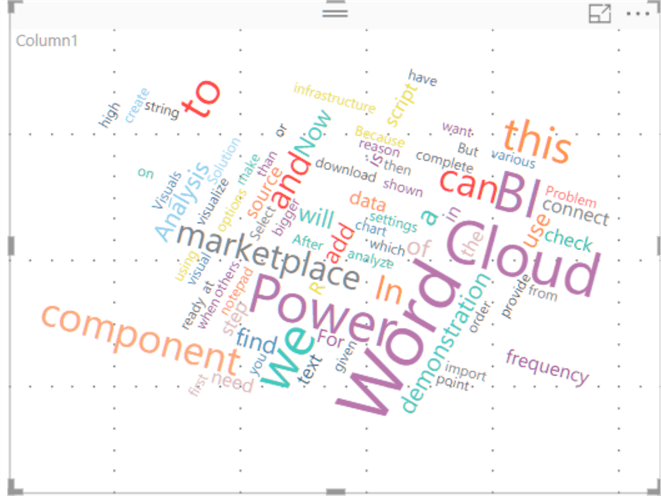
As a best practice, we don't want to visualize propositions or meaningless words in word cloud analysis. Because they don't define any meaning and can be confusing. For this reason, we have to exclude these values. To perform this step, we will enter some data to Power BI to exclude these words. You will click Enter Data and add the words.
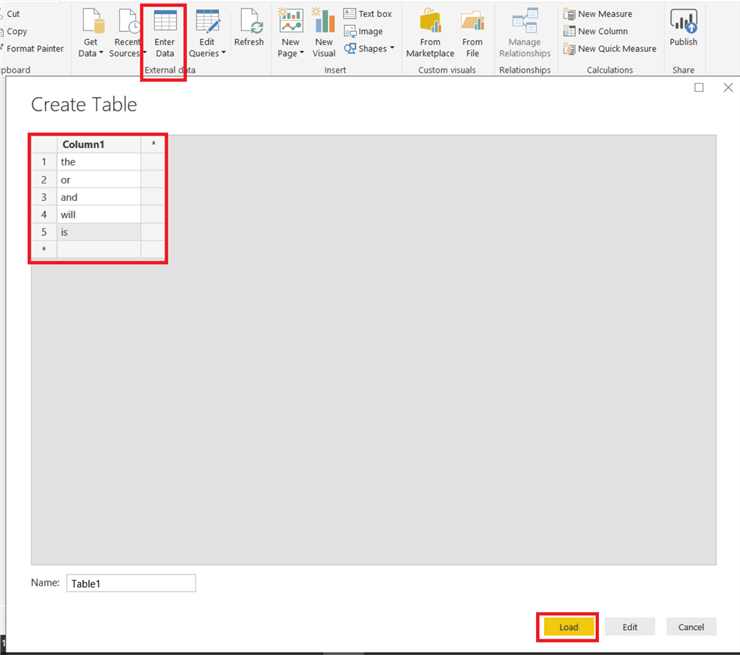
Now we will create a relation between these two data sources. We need the relations because the word cloud visual does not work with separated data sources. For this reason, we have to create relation between these two data sources. We will click Relationships.

We will create a relationship between two data sources. In the relationship tab we will click Manage Relationships.

We will click the New button in the Manage relationships pane.
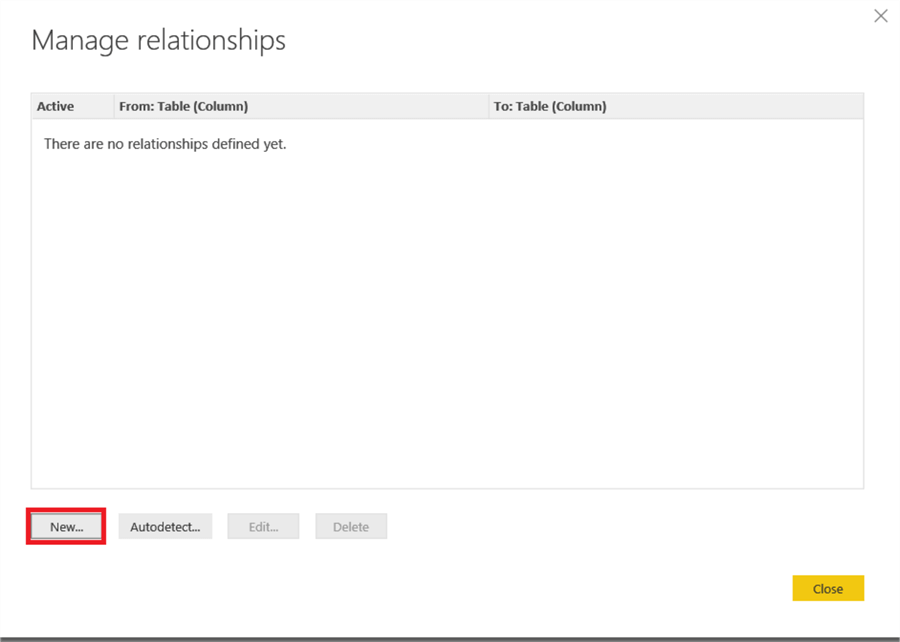
We will generate the relationship between two data sources.
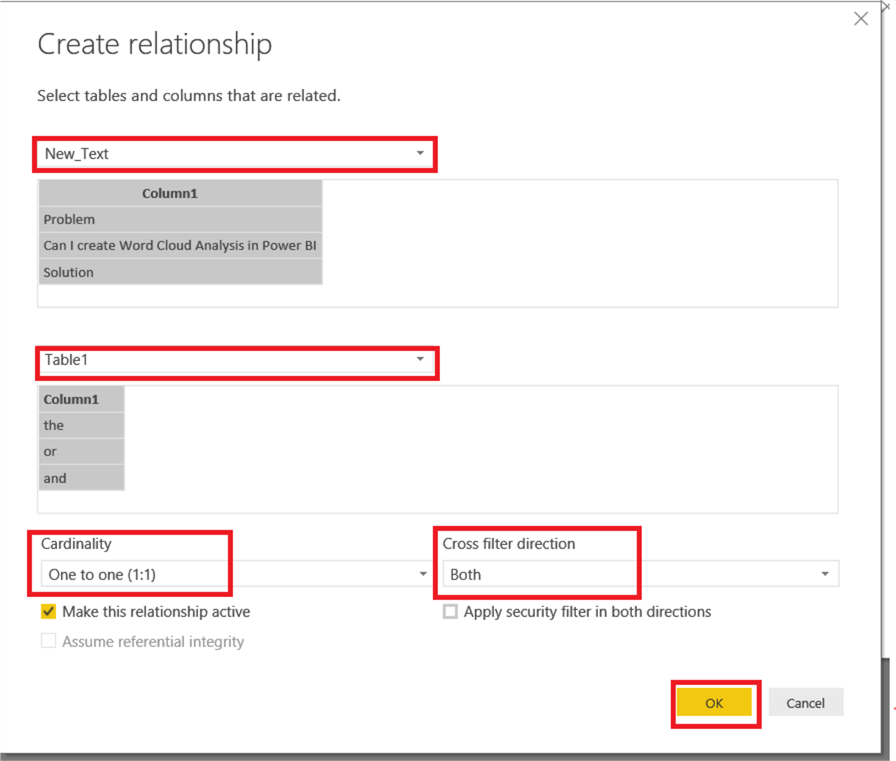
In this step we will exclude these characters in the Word Cloud. We will drag and drop the Column1 field to the excludes field.
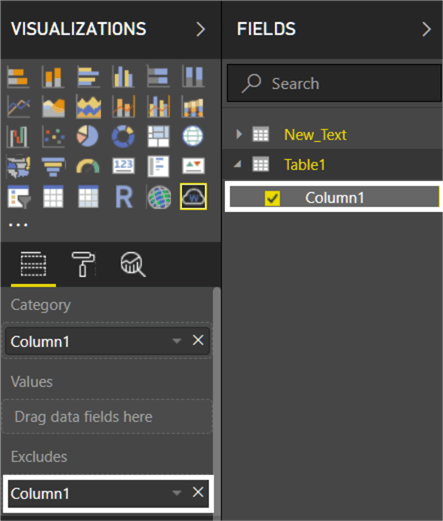
After this step, the Word Cloud component automatically remove these words. At the same time, we can change the word cloud visual formats. You can find several properties under the format tab. Such as you can change the title or word cloud visual and properties of the title or you can set width and height of the word cloud. In this demonstration we will only change the Rotate Text Property.
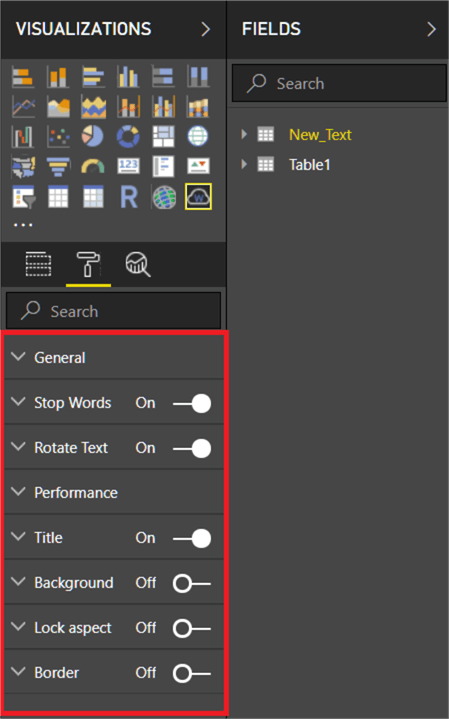
Now we will close the rotate text property. We will click on the word cloud and close the Rotate Text property.
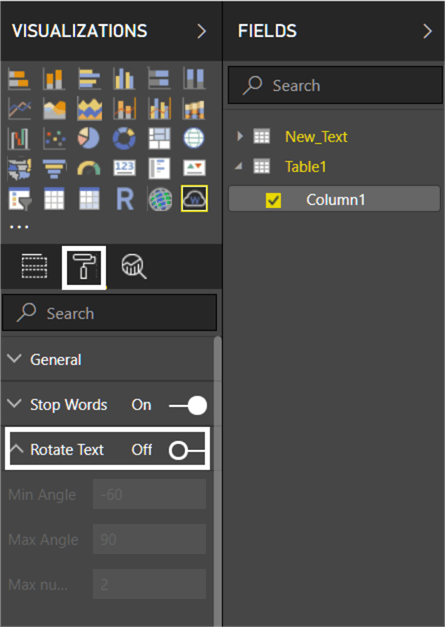
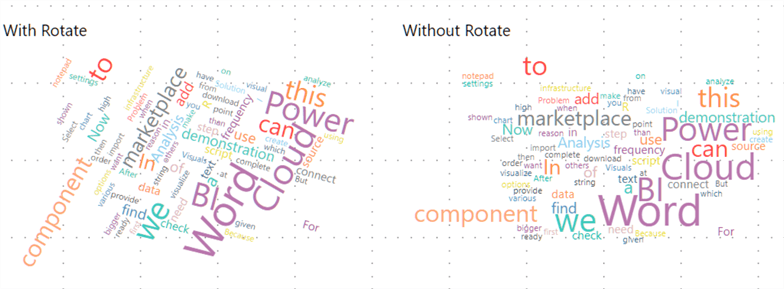
In this tip we briefly discussed how to use the Word Cloud component in Power BI. The Power BI Word Cloud Visual offers a great solution for analyzing text, an article or a similar type of word strings.
Next Steps
- Create a sample Notepad file and use this file as a data source or connect to another data source in Power BI. Then connect this data source to the word cloud visualization.
- Change the word cloud component format properties.
- Read below article to explore Power BI capabilities.
Learn more about Power BI in this 3 hour training course.
About the author
 Esat Erkec is a Microsoft certified SQL Server Database Administrator that has been working with SQL Server since 2004.
Esat Erkec is a Microsoft certified SQL Server Database Administrator that has been working with SQL Server since 2004.
This author pledges the content of this article is based on professional experience and not AI generated.
View all my tips






